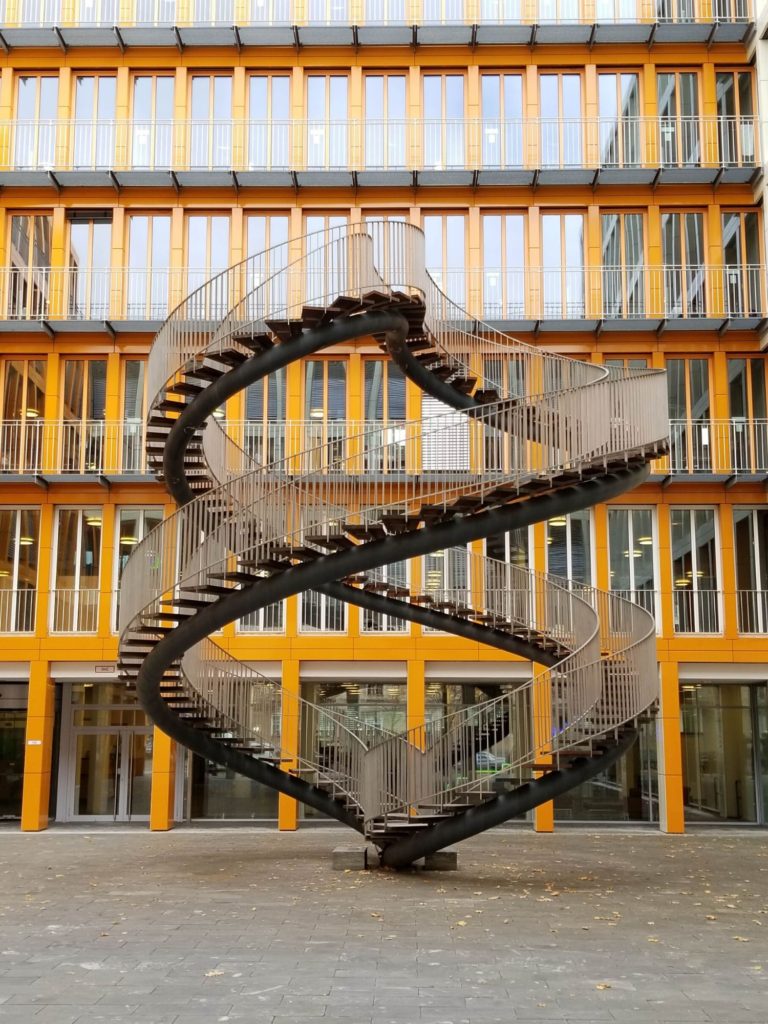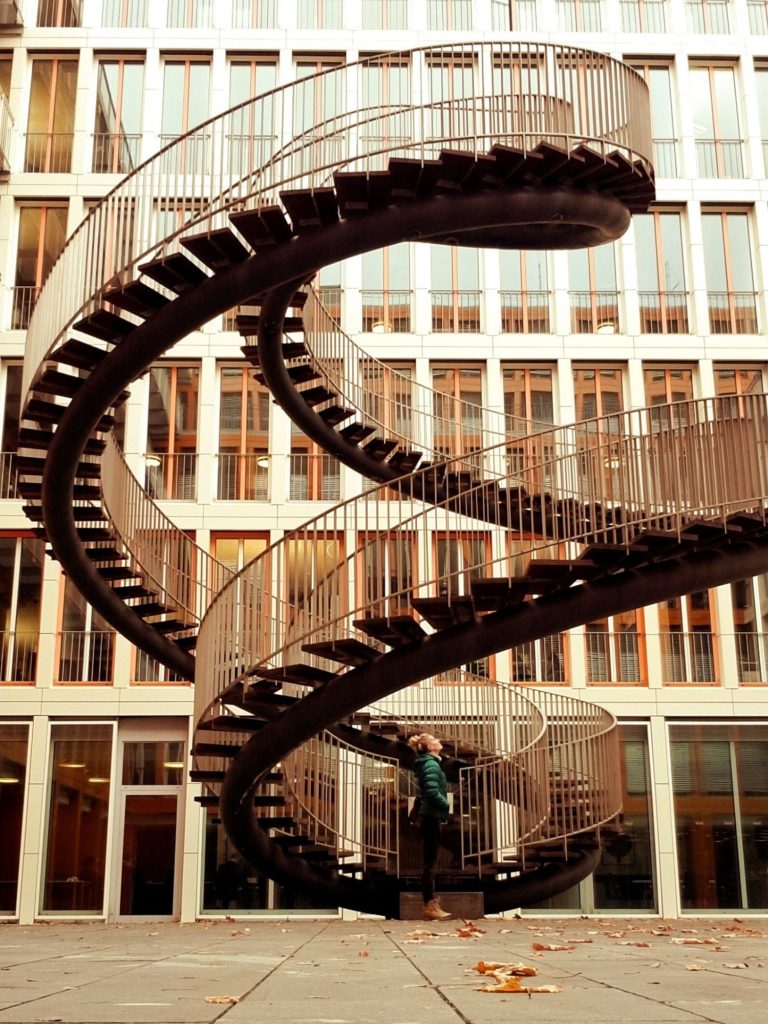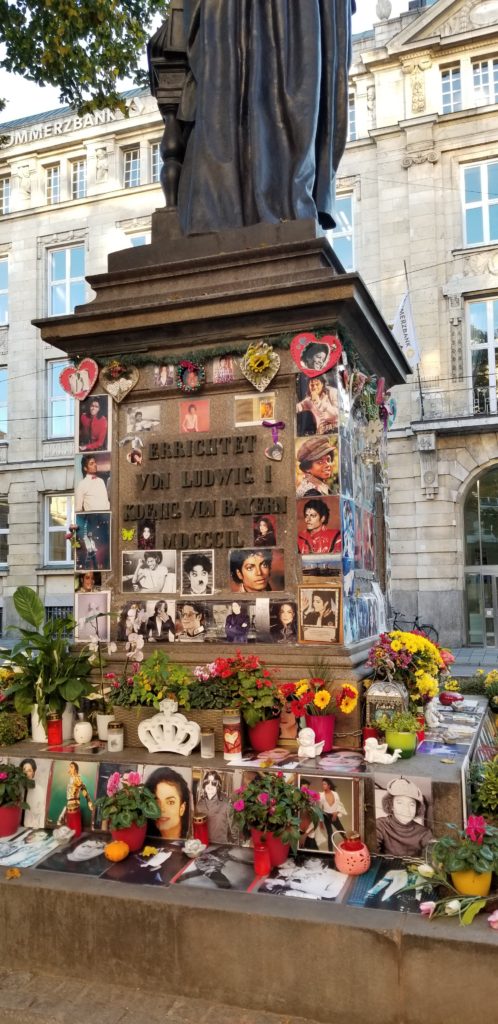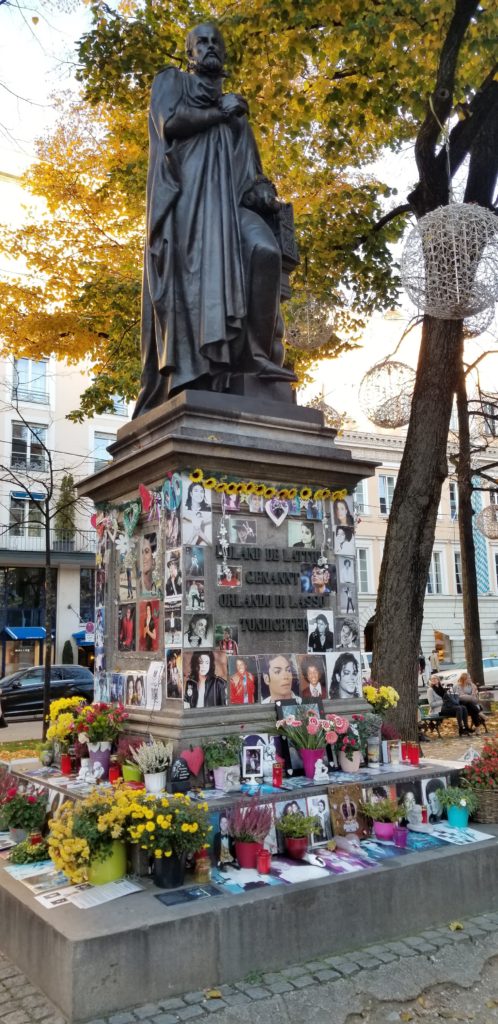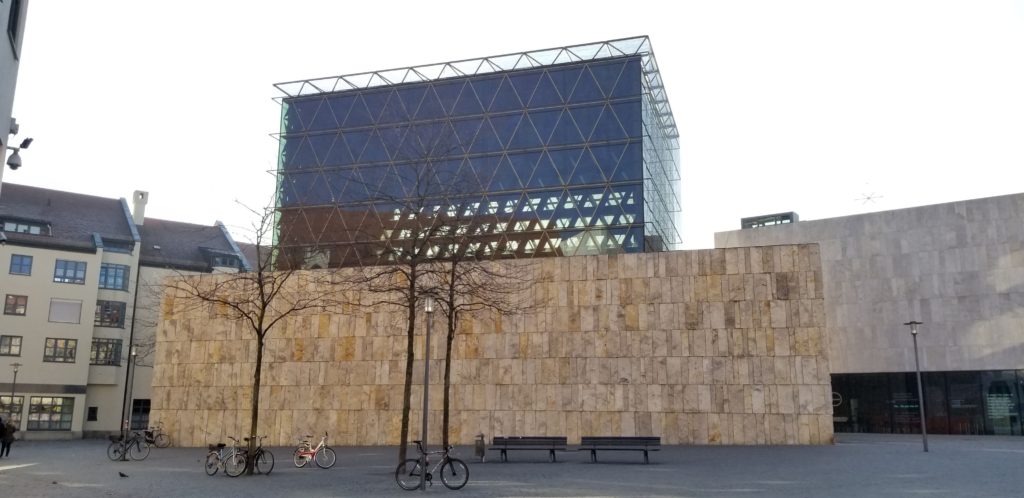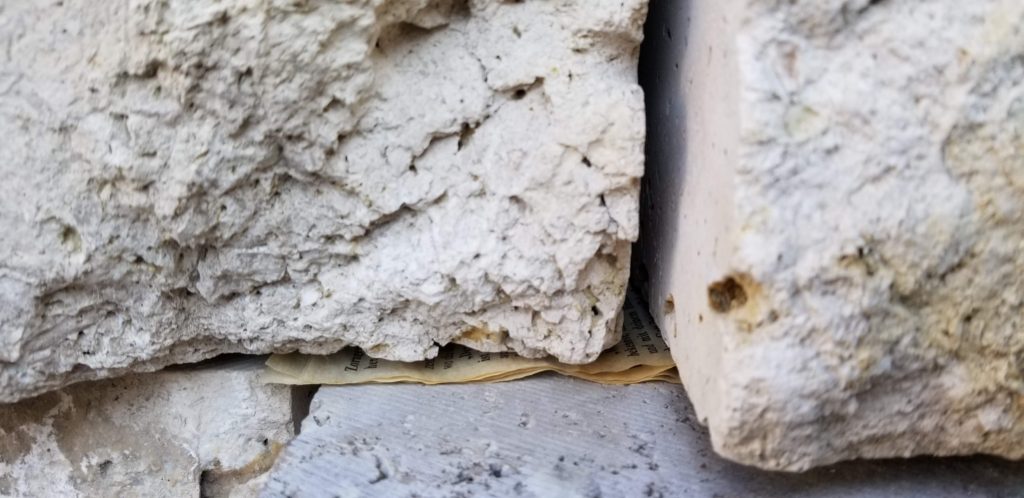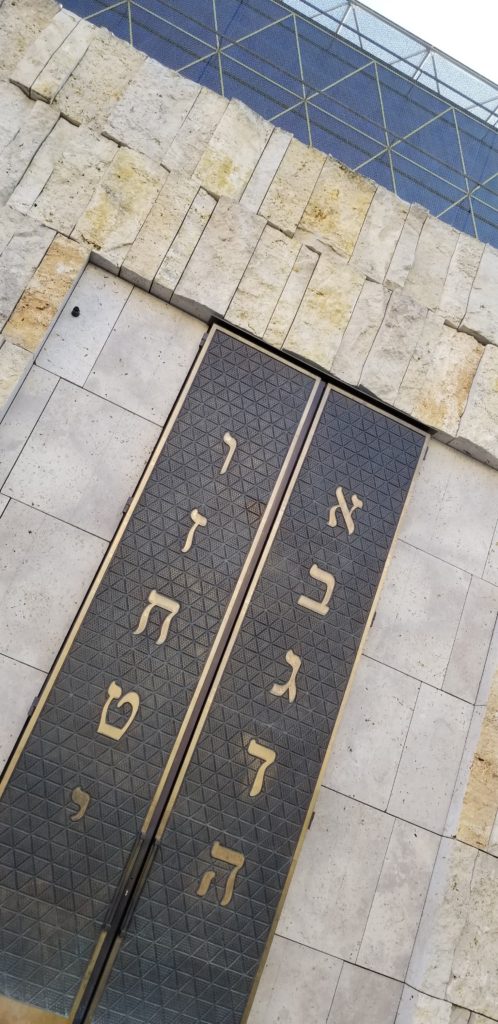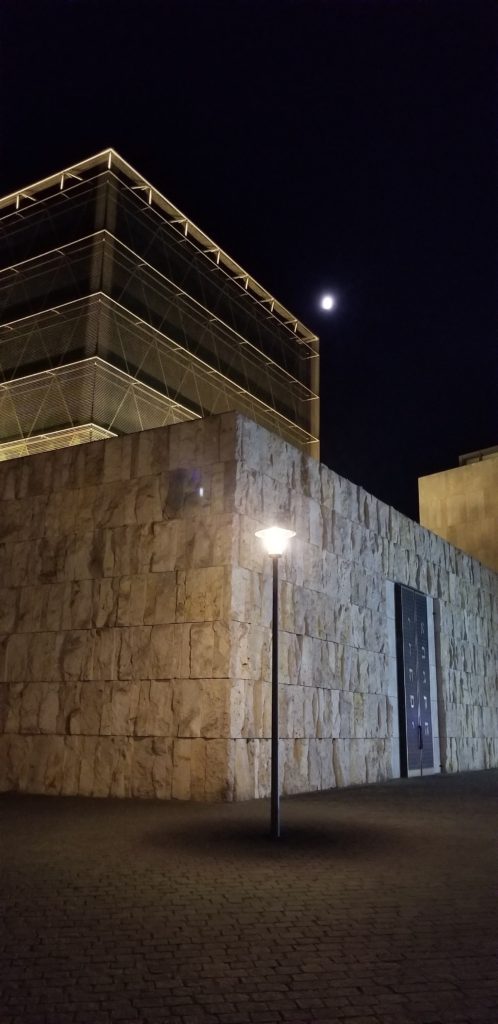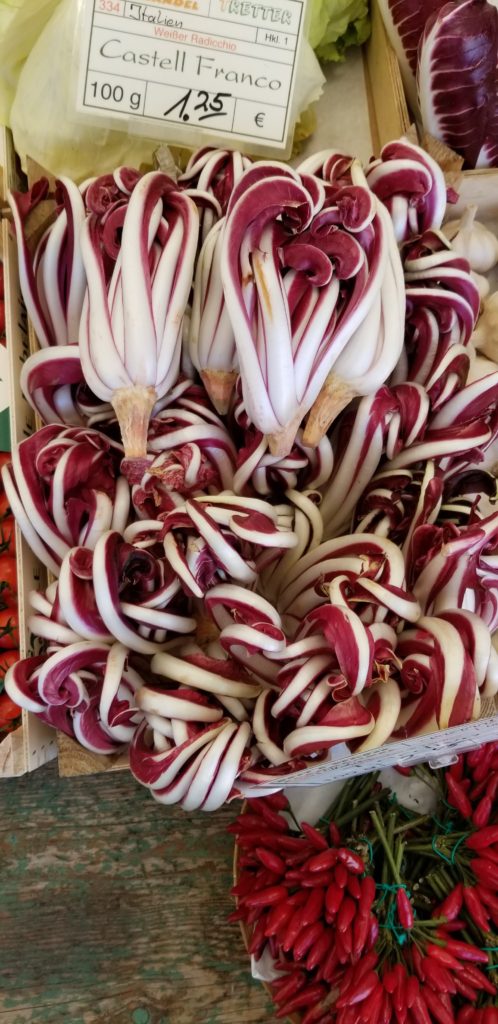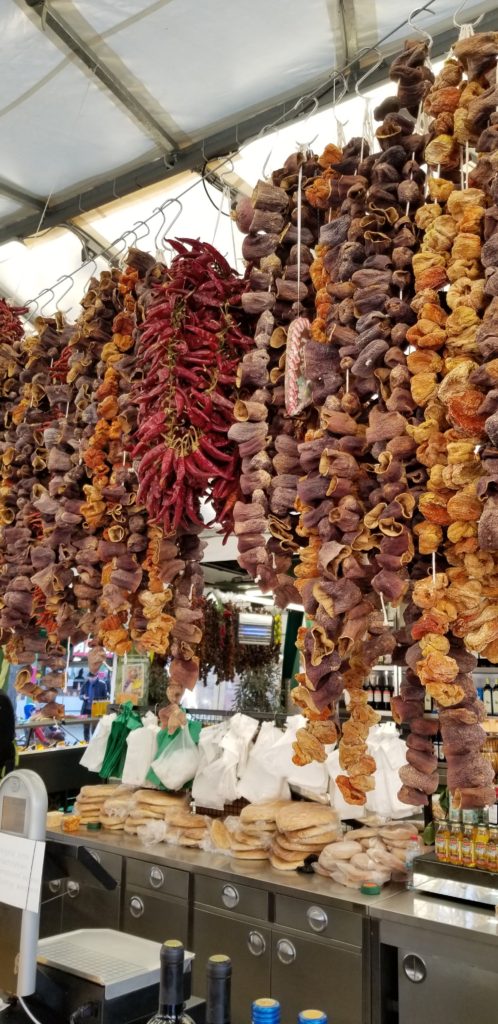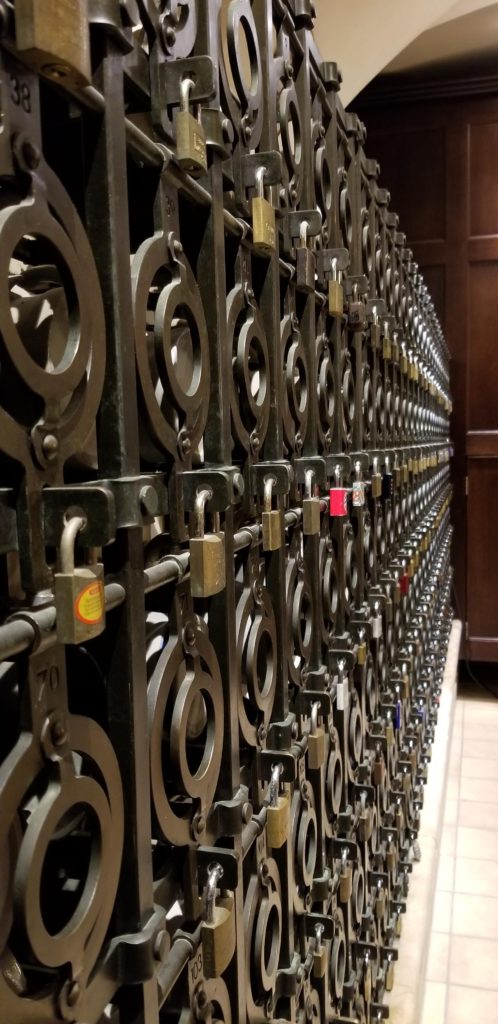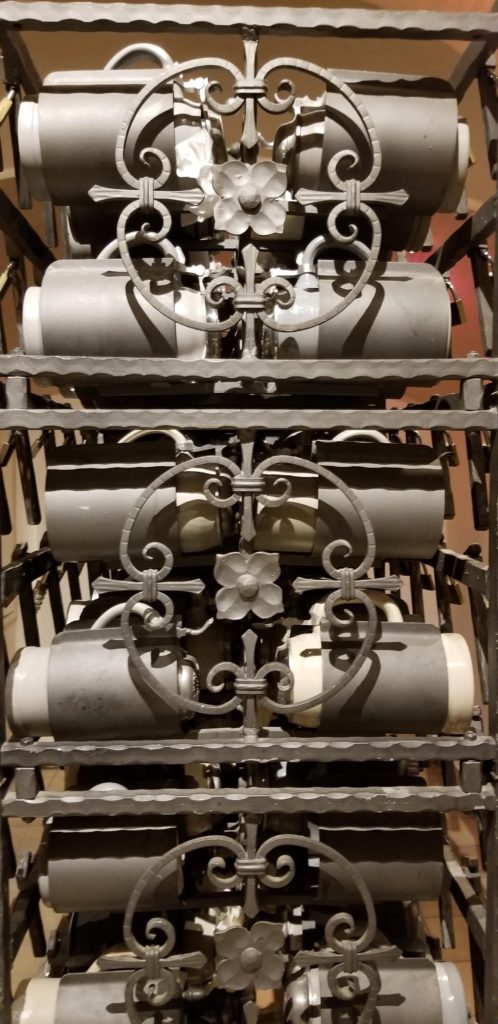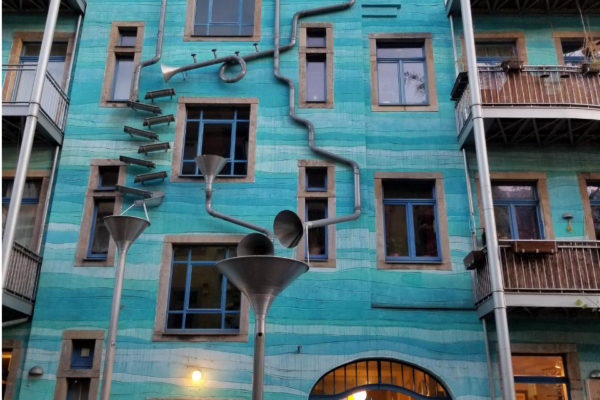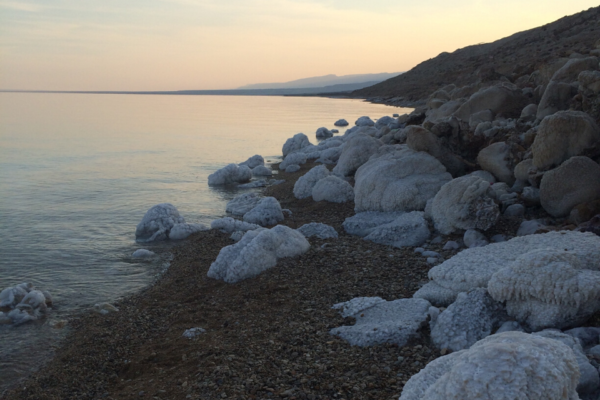Munich is a fantastic city with so much to see and do. I’m always on the hunt for interesting sights that don’t cost anything to see (because I’m a nerd and also usually broke) and Munich didn’t disappoint. Most of these sights are located just steps from each other in the city centre and the rest are a short walk away. Here are my favourite offbeat and free things to see in Munich.
UMSCHREIBUNG
Umschreibung is German for “euphemism” or “circumlocution”. Danish artist Olafur Eliasson describes his mysterious work as “movement without destination”. And when I look at it, I see just that. Always travelling but never arriving. This sculpture is located in the courtyard of a Big 4 accounting firm – one I know very well because I worked at it for eight years. I learned so much in those days and have immense gratitude for them. But I also learned that climbing the corporate ladder is not for me. I’d much rather stand under it and stare up for as long as I want.
EISBACHWELLE
Catch a wave, bruh! This nifty standing wave in the middle of the city has been attracting surfers since the 1970s. You can find it where the river Isar, which meanders through the leafy Englischergarten, flows under Prinzregentenstraße. It looks super fun but the current is strong and the wave can be over a metre high so it’s best to leave the surfing to more experienced surfers. It’s just as fun to watch, plus you can have a snack at the same time. For best viewing, you can stand on the banks of the river or look down from the bridge.
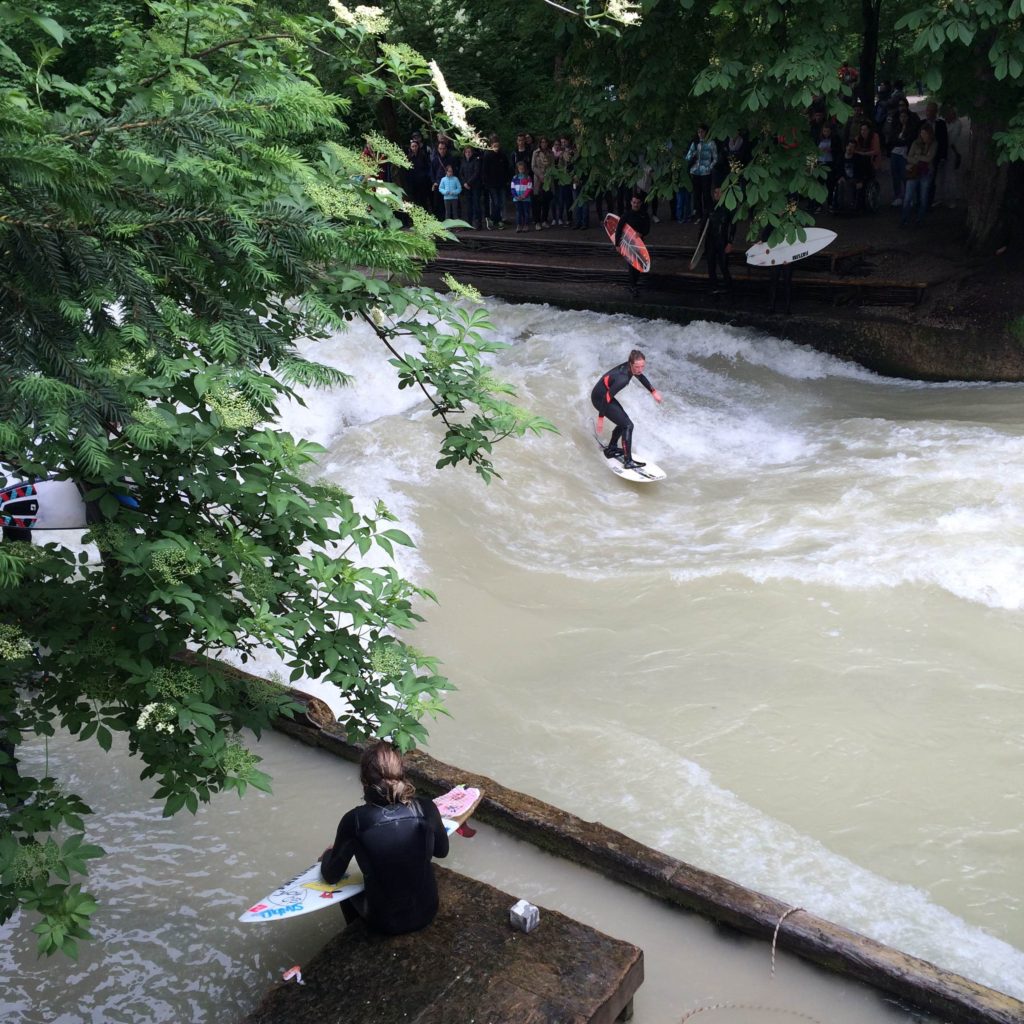
ORLANDO DI LASSO / MJ MEMORIAL
Statues of old guys are no rarity in Europe but shrines to Michael Jackson are. This statue honours Orlando di Lasso – a 16th Century composer who loved Munich with all his heart. So much that even though he was offered several lucrative positions elsewhere in Europe, he always declined because he loved his life in Munich. When Michael Jackson died in 2009, fans immediately adorned this statue with MJ memorabilia, photos, candles, flowers, and gifts. And kept doing it. Until literally a decade later, this is still a shrine to Michael Jackson (much to the delight of di Lasso’s family, I’m sure). There’s no connection between di Lasso and MJ. Supposedly, fans chose this spot because it’s across the street from the hotel MJ stayed in whenever he was in Munich.
WEIßE ROSE MEMORIAL
The Weiße Rose (White Rose) was a group of students dedicated to resisting Nazi tyranny through nonviolent means. Led by siblings Hans and Sophie Scholl, the Weiße Rose demonstrated their opposition by engaging in nonviolent activities such as political graffiti and handing out pamphlets. On February 18, 1943, Hans, Sophie, and members of the Weiße Rose were handing out pamphlets in the courtyard of Ludwig-Maximilians-Universität. The Gestapo arrived and arrested Hans and Sophie. As they were being taken away for interrogation, Sophie threw her pamphlets in the air. Hans and Sophie were executed by beheading four days later.
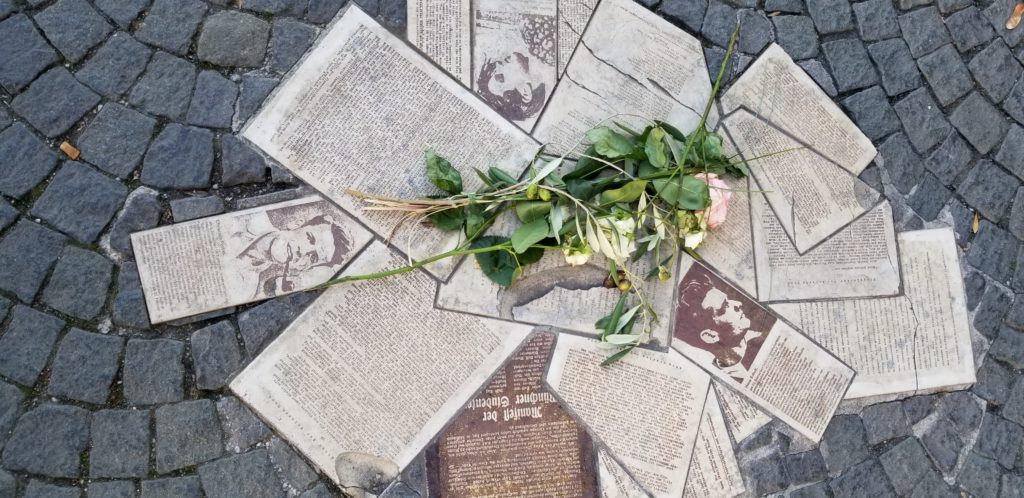
These bronze replicas of Weiße Rose pamphlets represent the ones Sophie threw in the air. You can find them at the entrance to the university’s courtyard. The first time I went to see them, it was a Thursday afternoon and hundreds of students were walking over them. I went back again on a Sunday morning. Not a soul in sight. Someone had placed a white rose.
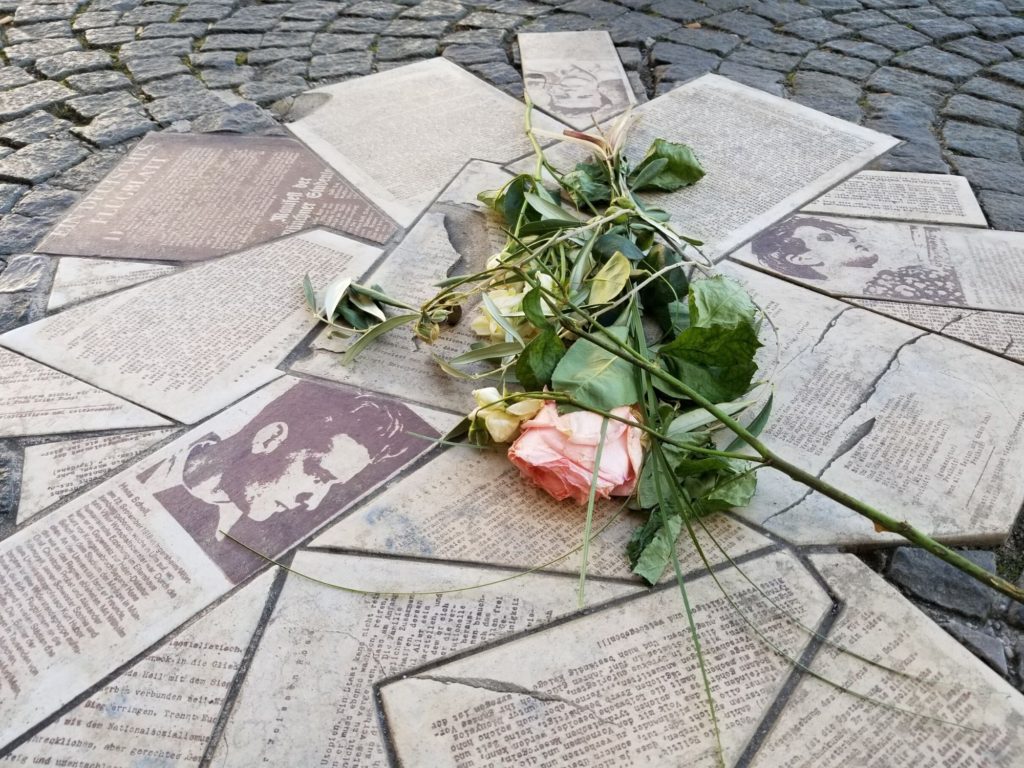
VISCARDIGASSE
Viscardigasse is the actual name of this alley but it is also known as Drückebergergasse aka “Shirker’s alley” or “deserter’s alley”. Nearby, there used to be a monument to Hitler and he required every person who passed by it to give a Nazi salute. Compliant behaviour was “encouraged” by armed guards stationed there. Those who wished not to salute a tyrant took a detour through this alley to bypass the memorial. The trail of bronze paving bricks commemorates those resistors.
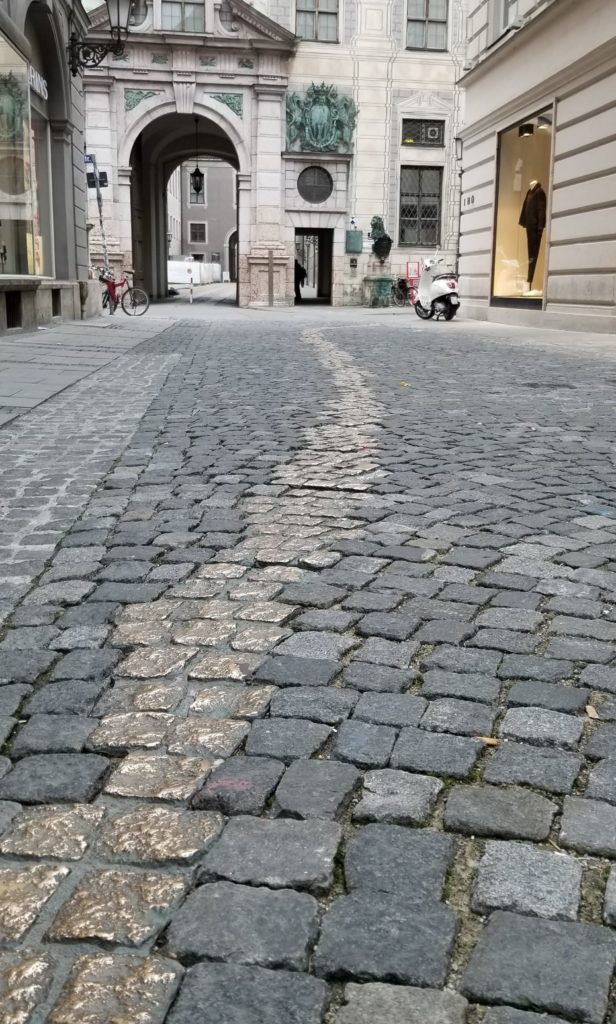
SAINT MUNDITIA
St. Peter’s Church is the oldest church in Munich and is appropriately nicknamed Alter Peter (“Old Peter”). First built around 1158, it was destroyed in a fire in 1327 but rebuilt shortly after and still stands today. It honestly blows my mind how old this church is.
Anyway, inside is this glass coffin holding the jewelled skeleton of Saint Munditia: Patron Saint of Spinsters. Her remains were transferred here from the catacombs of Rome in 1675. Her bones are covered in jewels and she holds a vial of blood in her hands. Whose blood, I don’t know. Under her head is a stone from her arcosolium in the Roman catacombs. Its inscription indicates that she died peacefully at age 60 from beheading with a hatchet. Maybe something is lost in translation because that does not sound like a peaceful death.
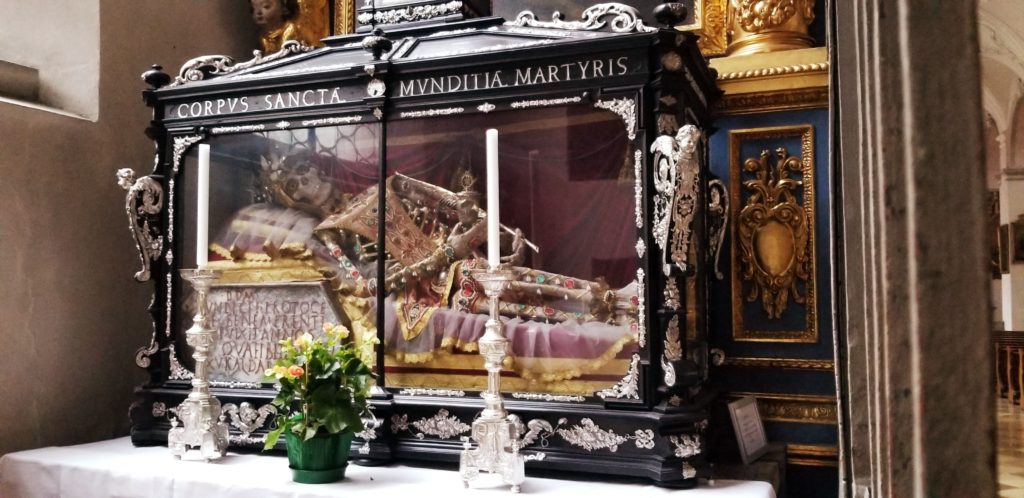
Saint Munditia’s feast day is November 17th, which is celebrated with a High Mass and candle procession. On top of her ossuary is the skull of Saint Erasmus of Formiae, patron saint of sailors and protector against intestinal ailments. But most people don’t notice it’s there. Like me, when I cropped it out of the picture. The interior of the church is also pretty incredible and worth a look.
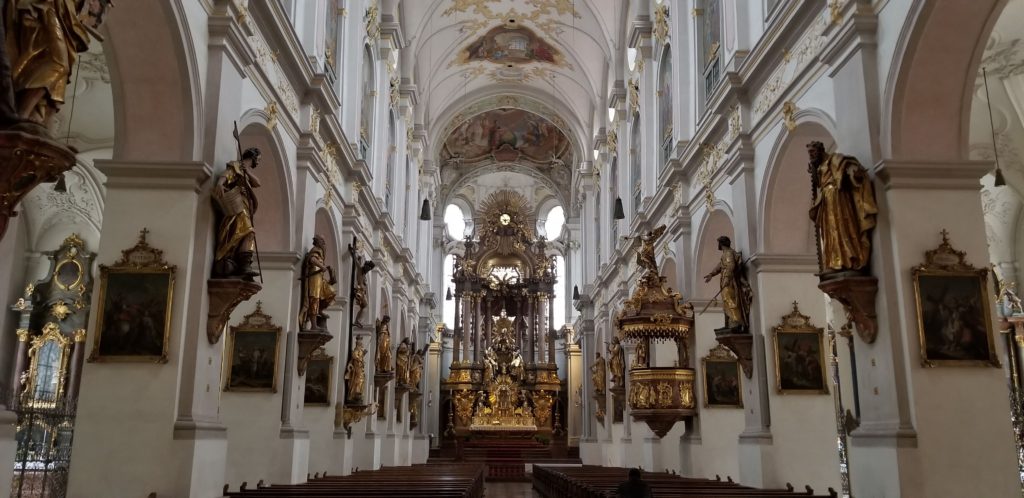
OHEL JAKOB SYNAGOGUE
Everywhere I go, I make a point to see the local synagogues and this is one of my favourites. “Ohel” means “tent” in Hebrew, so this is “Jacob’s Tent”. Now Munich’s main synagogue, the original one was a short distance from here. It was destroyed in 1938 on Kristallnacht (Night of Broken Glass) when SA paramilitary forces and civilians smashed and burned Jewish-owned businesses and synagogues. The new Synagogue Ohel Jakob opened on November 9, 2006 – the 68th anniversary of Kristallnacht.
The glass and metal cube on top intentionally resembles a tent, alluding to Moses’ and the Israelite’s 40-year journey through the desert. The door was made in Budapest and features the first ten letters of the Hebrew alphabet to symbolize the Ten Commandments. Travertine stone blocks comprising the base of the synagogue resemble the Western Wall in Jerusalem. Cracks in the Western Wall are filled with millions of prayers scrawled on papers. I checked the cracks of this synagogue to see if people did the same here. All I found were some book pages – I don’t know if they have some meaning but some things should stay mysteries, so I left them alone.
The synagogue is part of a Jewish cultural complex, which includes a Jewish museum and cultural centre next door. An underground tunnel called Gang der Erinnderung (“Corridor of Remembrance”) connects the synagogue and the community centre. It contains a memorial to the 4,587 Munich Jews murdered in the Holocaust.
VIKTUALIENMARKT
Munich’s Viktualienmarkt started 200 years ago as an herb market but now it has all kinds of yummy stuff: meat, cheese, spices, olives, flowers, baked goods, and weird geometric produce.
Like most of Munich, Viktualienmarkt was severely damaged in WWII and city officials didn’t want to rebuild it but residents lobbied for it and rebuilt it from their own funds. The market covers a large, pedestrianized area right in the city centre and it’s great to just grab a coffee and walk around. In the middle is a year-round beer garden that seats up to 600 people. In the summer it is shaded by chestnut trees and in the winter they serve glühwein in addition to a rotating selection of local beers. The market and beer garden are open Monday-Saturday, all year round.
RATHAUS-GLOCKENSPIEL
Just a quick walk from the Viktualienmarkt you’ll find one of Munich’s most popular attractions: the Rathaus Glockenspiel. It’s a mechanical clock with figurines re-enacting historical events. The top portion of the glockenspiel depicts the opulent wedding of Bavarian Duke Wilhelm V in 1568. He was a Big Deal because he founded the first brewery in Munich. The show (as I’ll call it) includes mechanical jousters, recalling the royal joust that was a highlight of the wedding celebrations that spanned two weeks. The joust took place right there in Marienplatz, where viewers of the glockenspiel are standing.
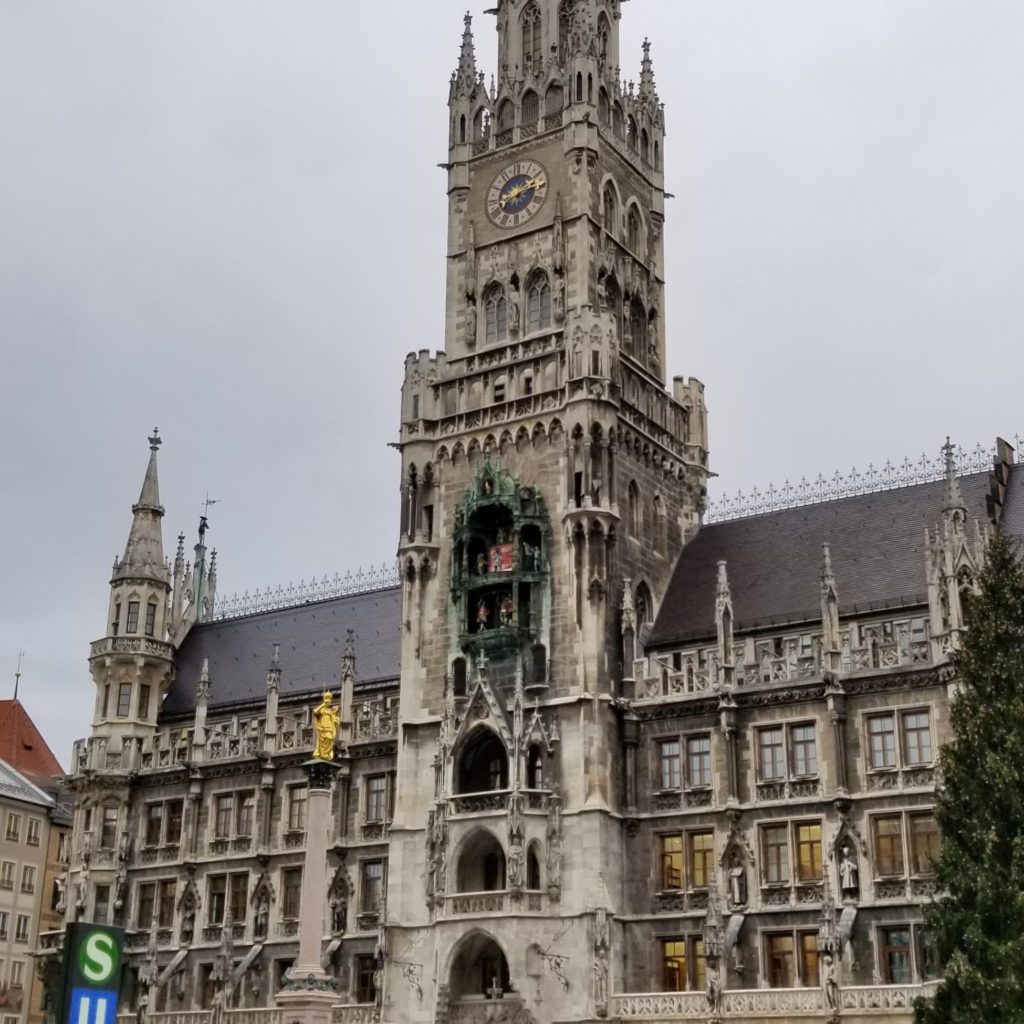
The lower portion of the glockenspiel features coopers (barrel-makers) doing their famous Schäfflerstanz (Coopers’ Dance). Legend has it that after a plague in 1517, people were afraid to come out of their houses (sounds kinda like 2020…) To get people back into the swing of daily life, coopers made up this foot-slapping dance to encourage them to come out and join in the fun.
The Rathaus Glockenspiel was built in 1908 and remarkably survived WWII bombing that razed nearby buildings. The show is on every day at 11 a.m. with extra shows at noon and 5 p.m. in the summer.
HOFBRAUHAUS STEIN LOCKERS
Just steps from the Rathaus Glockenspiel you’ll find Munich’s oldest brewery: the famous Hofbräuhaus. It’s a massive place with long wooden tables and benches, rowdy laughter, and oompy-doomp music (it’s called that, right?). When you walk in, turn to the left and take a look at the personal beer stein lockers where Hofbräuhaus regulars can keep their own stein on-site. There’s 424 lockers and the only way to get one is to inherit it (that’s some prime real estate, folks). Annual rent is about 200 EUR and you still have to wash your stein yourself!
The vibe in the Hofbrauhaus is upbeat, raucous, debaucherous, and loud. I highly recommend joining in the fun with a pretzel and a giant mug of beer like this one that is bigger than my head.


